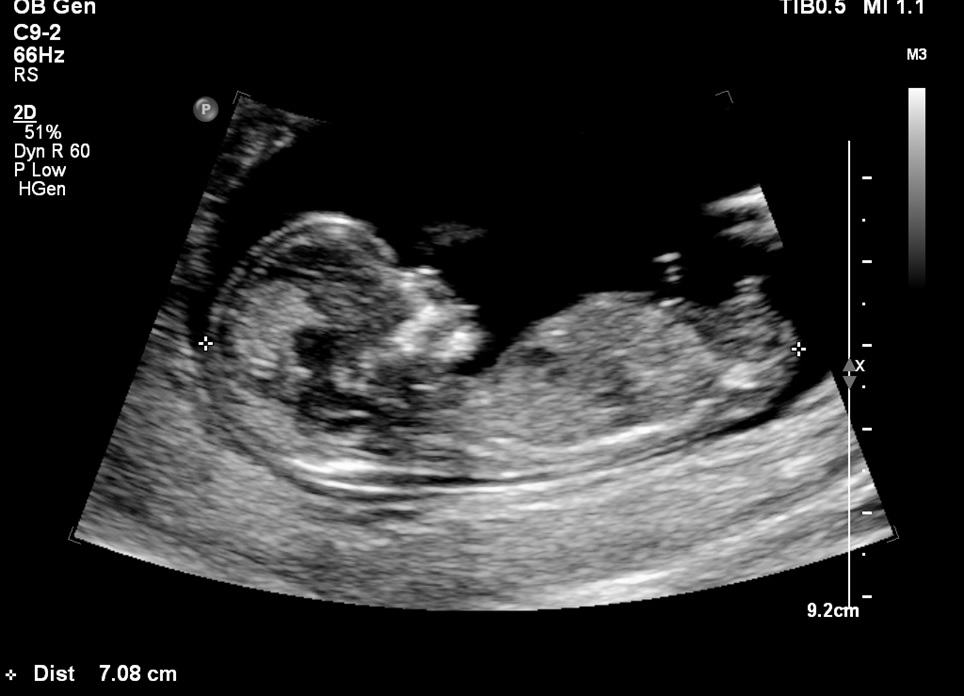Crown Rump Length (CRL)
Inaccurately measuring the CRL can have a serious effect on the risk calculation for Down syndrome screening.
The CRL is used to standardise both biochemistry and nuchal translucency.
If the CRL is over measured the biochemistry will appear to be immature, with the potential to increase the false positive rate. Under measurement of the CRL will potentially have the reverse effect on the biochemistry. Similarly inaccurate measurement of the CRL can adversely affect the accuracy of the nuchal translucency component of the risk calculation.
For the NT scan / combined first trimester screen, the CRL must be between 45mm and 84mm.
It is important to date the pregnancy using the CRL measurement for the combined screening test.
How to measure the CRL accurately:
MAGNIFY the image. Make the fetus as large as possible before freezing the image, ensuring the whole fetus is clearly demonstrated.
MIDSAGITTAL Obtain a midline sagittal section of the whole fetus. The image of the head should demonstrate the echogenic tip of the nose, the rectangular shape of the palate, and the translucent diencephalon. The head should be in line with the full length of the body, which is displayed along with the full length of the spine.
NEUTRAL POSITION The fetus should be neither hyperextended nor flexed. There should be fluid visible between the chin and the chest. Ensure the cervical spine is not extended. If the fetus is prone it is helpful to invert the image to ensure there is not hyperextension.
HORIZONTAL The fetus needs to be at 90 degrees to the axis of the ultrasound beam. ie a line drawn between the crown and rump is at 90 degrees to the ultrasound beam.
CROWN AND RUMP CLEARLY DEFINED The crown is the skin above the parietal bone. The rump is the skin inferior to the tip of the sacrum. There should be a pocket of fluid between the ends of the fetus and the uterine wall.
Use the + calipers.
CALIPER PLACEMENT Place the intersection of the + calipers at the outer margin of the skin borders
REPEAT THE MEASUREMENT Take the measurement 3 times and record the image meeting all of the criteria.

